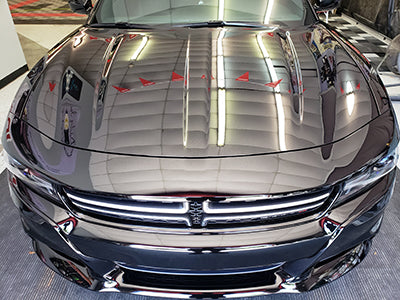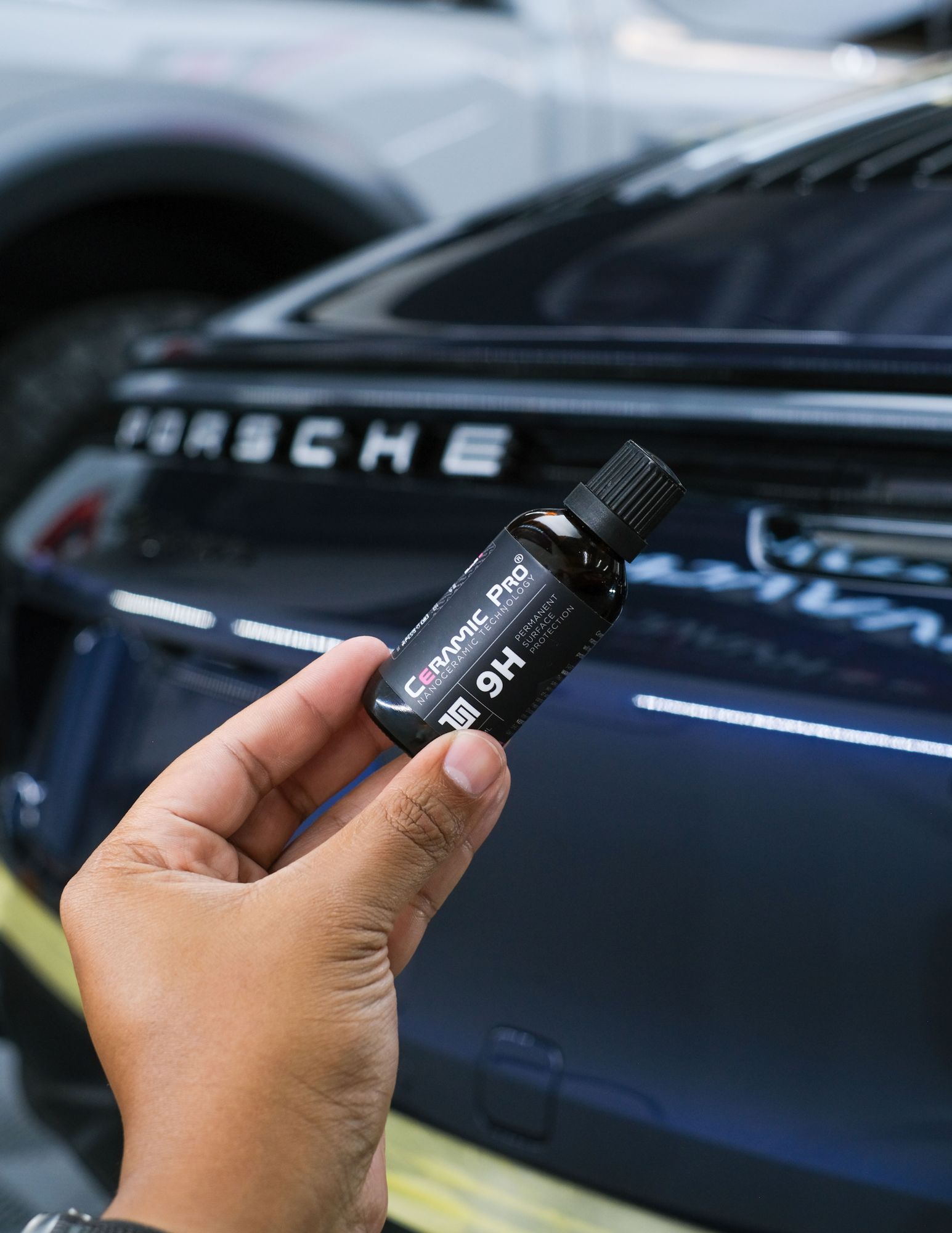Ceramic Coating: The Future of Automotive Surface Protection
Ceramic Coating: The Future of Automotive Surface Protection
Blog Article
Ceramic Covering vs. Standard Wax: Which Supplies Better Long-Term Defense?
The dispute in between ceramic coverings and conventional wax for car defense has actually garnered substantial attention among auto enthusiasts and experts alike. Ceramic coverings flaunt premium longevity and resistance to environmental factors, yet the complexity of their application raises concerns concerning ease of access and practicality.
Introduction of Ceramic Finishing
Ceramic finish has actually gotten substantial popularity among automobile lovers and detailers alike because of its innovative safety high qualities. This innovative innovation is made to produce a long lasting, hydrophobic guard over a vehicle's paint surface, significantly boosting its resistance to environmental pollutants such as dust, UV rays, and chemical spots. Unlike conventional wax, which supplies a temporary layer of defense, ceramic finishings bond at a molecular level with the paint, offering durable sturdiness-- often prolonging beyond two years with proper maintenance.
The application process includes careful preparation of the automobile's surface area, consisting of cleaning and brightening to guarantee ideal adhesion. As soon as applied, the covering cures to develop a durable layer that not just adds depth and gloss to the paint however additionally streamlines upkeep. With its hydrophobic residential or commercial properties, ceramic layer allows water and dust to glide off more easily, lowering the frequency of laundries and reducing the risk of swirl marks.
Additionally, ceramic coatings are offered in various formulas, allowing customers to choose items customized to their specific demands and preferences. Generally, ceramic layer stands for a considerable advancement in paint security technology, delivering premium performance contrasted to conventional options.
Overview of Conventional Wax
Generally related to as a staple in automotive care, wax offers as a preferred choice for those looking for a simple method to improve and secure their vehicle's paint - ceramic coating. Automotive wax commonly comprises natural ingredients, such as carnauba, or synthetic substances, made to produce a safety layer on the surface area of the paint. This layer not just boosts the vehicle's gloss and shine but additionally provides an obstacle versus ecological impurities
The application of wax is normally easy to use, making it obtainable for both experts and DIY enthusiasts. When applied, wax needs a healing duration, after which it solidifies to create a safety covering.
Nevertheless, while wax is effective for improving the visual allure of a vehicle, it is very important to keep in mind that the security it uses may require extra frequent reapplication contrasted to alternative products, such as ceramic layers. In general, traditional wax remains a popular alternative for those prioritizing convenience of usage and instant aesthetic improvement.
Toughness and Long Life Comparison
While both ceramic finishings and traditional wax offer safety advantages for automobile paint, their longevity and longevity differ significantly. Standard wax, typically made from all-natural carnauba or artificial polymers, generally provides a protective layer that lasts around 3 to six months. This fairly brief life expectancy demands regular reapplication to keep ideal protection.
In contrast, ceramic coatings are crafted from advanced nanotechnology, developing a covalent bond with the paint surface area. This causes a robust, hydrophobic layer that can endure for two to five years, depending on the product and ecological problems. The premium sturdiness of ceramic finishings is attributed to their chemical framework, which offers improved resistance to scratches, UV rays, and oxidation.

Security Versus Environmental Factors
Securing a vehicle's paint from environmental factors is crucial for preserving its appearance and value with time. Automobiles are continuously revealed to a selection of elements, including UV rays, bird droppings, tree sap, acid rain, and road gunk, every one of which can compromise the integrity of the paintwork.
Ceramic finishes provide a durable protection against these ecological aggressors. Unlike standard wax, which can degrade rapidly under UV exposure, ceramic layers form a resilient, hydrophobic layer that stands up to the harmful results of sunshine and ecological toxins. This advanced innovation produces a chemical bond with the vehicle's visit homepage surface, supplying remarkable protection that lasts for years, also in harsh conditions.
Traditional wax, while much easier look at this now to apply, normally calls for frequent reapplication and uses minimal resistance to contaminants and UV rays. With time, it can break down, leaving the paint vulnerable to scrapes and oxidation. On the other hand, ceramic finishes maintain their protective high qualities longer, substantially lowering the risk of paint damages and ensuring that the lorry preserves its aesthetic appeal. Therefore, ceramic finishings are increasingly recognized as the superior option for lasting defense against environmental factors.
Application and Maintenance Distinctions
The approaches of application and subsequent maintenance for ceramic finishings and conventional wax differ significantly, affecting the general individual experience and effectiveness of each product. Ceramic coverings require a more complex application process, generally entailing surface area prep work that consists of washing, sanitizing, and polishing the vehicle. When the surface is ready, the ceramic coating is used in a controlled environment, usually requiring specialist know-how to make certain correct healing and bonding to the paint.

While both products enhance lorry appearance, the longer-lasting protection used by ceramic layers might justify their initial financial investment, despite the even more demanding application procedure. Conversely, conventional wax remains a preferred option for those looking for a less complex, albeit short-term, service.

Conclusion
In verdict, ceramic finishings demonstrate considerable benefits over standard wax in terms of durability and environmental management. With a life-span expanding two to 5 years and remarkable resistance to UV rays, dust, and chemical stains, ceramic coverings provide a more reliable solution for lasting lorry maintenance. Although the application procedure may call for expert expertise, the resulting cost savings and reduced frequency of reapplication highlight the value of ceramic coverings for those looking for ideal automobile defense.
The debate in between ceramic finishes and traditional wax for vehicle protection has actually garnered substantial focus among automobile lovers and specialists alike. Unlike traditional wax, which supplies a temporary layer of security, ceramic finishings bond at a molecular degree with the paint, supplying long-lasting toughness-- frequently prolonging past two years with correct maintenance.
While both ceramic coatings and standard wax offer safety benefits for vehicle paint, their resilience and durability vary dramatically. For automobile enthusiasts seeking lasting security, ceramic coatings provide an engaging benefit over typical wax items.
In final thought, ceramic coatings show significant advantages over conventional wax in terms of toughness and ecological protection.
Report this page